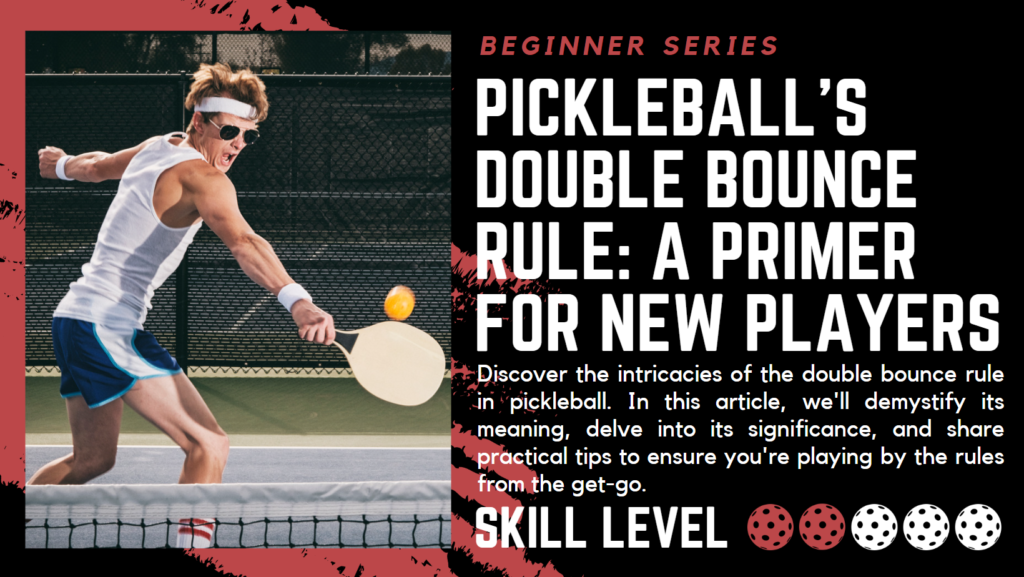
Pickleball’s Double Bounce Rule: A Primer for New Players
Discover the intricacies of the double bounce rule in pickleball. In this article, we’ll demystify its meaning, delve into its significance, and share practical tips to ensure you’re playing by the rules from the get-go.
Pickleball, a fast-paced and enjoyable game that appeals to players of all ages and skill levels, has become incredibly popular and the fastest-growing in racquet sports. One of the most crucial rules that sets it apart from other paddle sports is the “double bounce rule,” also known as the “two bounce rule”. This rule, a part of the game since its early days, helps make pickleball a more balanced and competitive game. This article will take you through what the double bounce rule is, how it works, its benefits, and common mistakes to avoid.
What is the Double Bounce Rule?
In the 2023 version of the USA Pickleball Association rulebook, the double bounce rule is defined as follows: “After the ball is served, each side must make one groundstroke prior to volleying the ball”. Put simply, both the serving team and the receiving team are required to allow the ball to bounce once before returning it, for a total of two bounces. After these two bounces have occurred, the ball can be volleyed or played off the bounce.
How the Double Bounce Rule Works
In order to adhere to the double bounce rule, the process begins with one player serving the ball to the opposing side. Following this, the team receiving the serve must allow the ball to bounce once before hitting it back to the team that served. Then, the serving team must also let the returned ball bounce one more time before returning it. After the ball has bounced on each side, the rule has been observed, and volleys and groundstrokes are allowed until the point is won.
Benefits of the Double Bounce Rule
The double bounce rule is a critical element in pickleball that prevents players from unfairly gaining an advantage by hitting the ball before it has landed on their side of the court. It stops players from simply serving and volleying to win points, which would drastically alter the game of pickleball. By enforcing a groundstroke after the serve, the rule encourages players to develop their groundstrokes, which are shots made after the ball has bounced. This makes the game more balanced and competitive, giving both players an equal opportunity to return the ball. Moreover, the double bounce rule allows for longer, more drawn-out rallies, increasing the game’s excitement and competitiveness. These longer rallies enable a smoother transition in the game, giving each team the time and space to get into the right position, creating a more enjoyable playing experience.
Common Mistakes Made with the Double Bounce Rule
Despite its apparent simplicity, new players often make mistakes with the double bounce rule. These mistakes include hitting the ball before it has bounced twice, volleying the ball on the first bounce, and not allowing the ball to bounce before returning it. It’s essential for players to understand and follow the rule in order to play the game correctly and fully enjoy the pickleball experience.
Conclusion
The double bounce rule is a key part of what makes pickleball such a fun and rewarding game. It helps to create a more balanced and competitive playing field and encourages players to develop their skills. If you’re new to pickleball, understanding and applying the double bounce rule is crucial to get the most out of the game. This rule, a cornerstone in the game of pickleball, ensures a fair and exciting play that players of all skill levels can appreciate.
